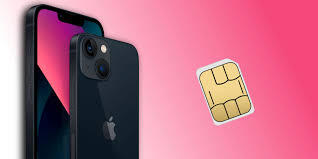Selecting the suitable SIM card for your iPhone can significantly impact your device’s functionality. From understanding the various types available to the process of activation and troubleshooting common issues, there’s a myriad of essential information to navigate.
But before diving into the intricacies of SIM cards, let’s first establish a solid foundation by exploring the fundamental question: What is a SIM card and why does it matter for your iPhone?
What Is a SIM Card?
If you own an iPhone, you might be wondering, ‘What exactly is a SIM card?’ Well, a SIM card, which stands for Subscriber Identity Module, is a small, portable memory chip that connects your iPhone to your wireless carrier’s network. This tiny card holds important information about your account, such as your phone number, contacts, text messages, and data usage.
SIM cards play a crucial role in allowing your iPhone to make calls, send texts, and access the internet. When you insert a SIM card into your iPhone, it authenticates your phone with the carrier, enabling you to connect to the network and utilize the services provided by your chosen carrier.
In essence, the SIM card acts as a key that unlocks your iPhone’s ability to communicate with the cellular network. Without a SIM card, your iPhone would be unable to make calls or access mobile data. So, next time you swap out your SIM card or upgrade your phone, remember the pivotal role this small chip plays in keeping you connected.
Types of SIM Cards for Iphone
When choosing a SIM card for your iPhone, it’s important to consider the various types available to ensure compatibility and optimal performance. The two main types of SIM cards for iPhones are the traditional SIM and the newer eSIM.
The traditional SIM card is a small, removable card that stores your phone number and other data. It’s commonly used in most iPhones and requires a SIM card tray for insertion.
On the other hand, the eSIM is embedded in your device and can be programmed remotely by your mobile carrier. This means you don’t need a physical SIM card and can easily switch between different carriers without swapping cards.
When selecting a SIM card for your iPhone, make sure to check which type your device supports. Some newer models only accept eSIMs, while older models require traditional SIM cards. Additionally, consider your usage needs and carrier compatibility before choosing between a traditional SIM or an eSIM for your iPhone.
How to Insert a SIM Card
To insert a SIM card into your iPhone, locate the SIM card tray on the side of your device. This tray is usually found on the right-hand side of the phone. You’ll need a SIM card ejector tool, which often comes with your iPhone. If you don’t have one, a paperclip can also be used. Insert the tool into the small pinhole next to the tray to pop it open.
Once the tray is ejected, carefully place the SIM card on the tray. Make sure the notched corner of the SIM card aligns with the notched corner of the tray. Gently push the tray back into the slot until it’s securely in place. Turn on your iPhone, and you should see a signal bar indicating that the SIM card has been recognized.
Remember to always power off your device before inserting or removing the SIM card to prevent any damage. Now that your SIM card is inserted, you’re one step closer to using your iPhone with your new service provider.
Activating Your SIM Card
To activate your SIM card, simply follow the instructions provided by your service provider. Typically, this involves inserting the SIM card into your iPhone and then following the activation steps outlined by your carrier. In most cases, you may need to visit the carrier’s website or call their customer service hotline to complete the activation process. Make sure to have your SIM card number and other relevant information on hand when activating to expedite the process.
Once you have inserted the SIM card and completed the activation steps, restart your iPhone to ensure that the changes take effect. You should see a signal strength indicator on the top corner of your device’s screen once the SIM card is successfully activated. If you encounter any issues during the activation process, double-check that you have followed all the instructions correctly. If problems persist, refer to the troubleshooting section for further assistance.
Troubleshooting SIM Card Issues
Having trouble with your SIM card activation? Let’s troubleshoot SIM card issues together.
If your iPhone is displaying a ‘No SIM Card Installed’ error, start by ejecting the SIM tray, ensuring the SIM card is properly inserted, and reinserting it firmly. Sometimes a simple reseating of the SIM card can resolve connectivity problems. Check if the SIM card is damaged or expired, as this can also cause issues. If your iPhone is still not recognizing the SIM card, try restarting your device. A quick reboot can often fix software glitches that may be affecting the SIM card functionality.
If the problem persists, make sure your iPhone’s software is up to date. An outdated operating system can sometimes lead to SIM card errors. Additionally, contacting your service provider for assistance can be beneficial. They can troubleshoot network-related problems or provide a replacement SIM card if necessary.
Conclusion
Overall, understanding the different types of SIM cards available for iPhones is essential for a seamless user experience.
How to insert them and how to activate them is equally important. By familiarizing yourself with these key points, you can troubleshoot any potential issues that may arise with your SIM card.
Remember, a properly functioning SIM card is crucial for staying connected and making the most out of your iPhone.

